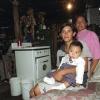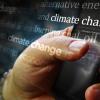
IIASA researchers have developed a novel measurement framework to track energy poverty that better aligns with the services people lack rather than capturing the mere absence of physical connections to a source of electricity. This alternative framework can aid better tracking of Sustainable Development Goal (SDG) 7 by virtue of its simplicity and sensitivity to the diversity in service conditions among the poor.
Despite significant efforts and progress made across the developing world to provide households with electricity, close to 800 million people, mainly in sub-Saharan Africa, still have no access to electricity services. According to a new study published in the journal Progress in Energy, accurately measuring energy poverty requires distinguishing poor electricity supply conditions from service deprivations within the home.
For instance, availability of power is a condition related to electricity supply, whereas whether a person enjoys a comfortable temperature level in their home depends on their ability to afford cooling equipment and its running costs. Tracking energy poverty in this way can help direct policy efforts towards energy suppliers and households, and thereby accelerate efforts to achieve the targets of SDG7: Ensuring universal access to affordable, reliable, sustainable, and modern energy for all.
Currently, two indicators are recommended to track Target 7.1 – Indicator 7.1.1: Proportion of population with access to electricity, and Indicator 7.1.2: Proportion of population with primary reliance on clean fuels and technology. These binary indicators, while easy to communicate and quantify, mask several service shortcomings among those that have connections to electricity, which underestimates the challenge of eradicating energy poverty.
“Our main objective in this research was to try to design a better but simple framework for measuring energy poverty, and apply this to actual data from Ethiopia, India, and Rwanda to test how well it captures energy poverty in comparison to other multidimensional frameworks, such as the World Bank’s Multi-Tier Framework (MTF),” explains Shonali Pachauri, acting director of the IIASA Transitions to New Technologies Program and a senior researcher in the Energy Program.
According to the authors, the World Bank MTF – while being a significant improvement over binary indicators – is overly complicated, and conflates electricity supply characteristics with household service conditions. The alternative framework the authors propose prunes the dimensions of energy poverty measures to those specified in the SDG 7 target and defines thresholds to mark fewer tiers. It also distinguishes electricity supply indicators from those that relate to household poverty. For instance, the authors propose to use appliance ownership as an indicator of households’ access to energy services rather than electricity consumption, which could be misleading if caused by poor energy efficiency. The affordability indicator is also expanded to include appliance purchase costs in addition to the recurrent electricity costs. When applied to real data, the new framework suggests that affordability is even more of a constraint to gaining access to modern electric services for households in Ethiopia, India, and Rwanda.
“Making the normative foundations of measurement frameworks more explicit make it easier to communicate what they capture. Such frameworks also need to strike a balance between accuracy of measurement with simplification and conceptual clarity for application on a global scale. Further refinements of the alternative framework we propose, through applications to other nations, can help improve how we identify the most vulnerable and design and target policies to improve energy access for all,” concludes Narasimha Rao a senior researcher in the IIASA Energy Program and a faculty member at the Yale School of the Environment.
Reference:
Pachauri S & Rao N (2020). Advancing Energy Poverty Measurement for SDG7. Progress in Energy DOI: 10.1088/2516-1083/aba890 [pure.iiasa.ac.at/16583]
News

28 June 2024
Drowning in waste: pollution hotspots in aquatic environments

27 June 2024
What can social media tell us about public views on climate change?

21 June 2024

